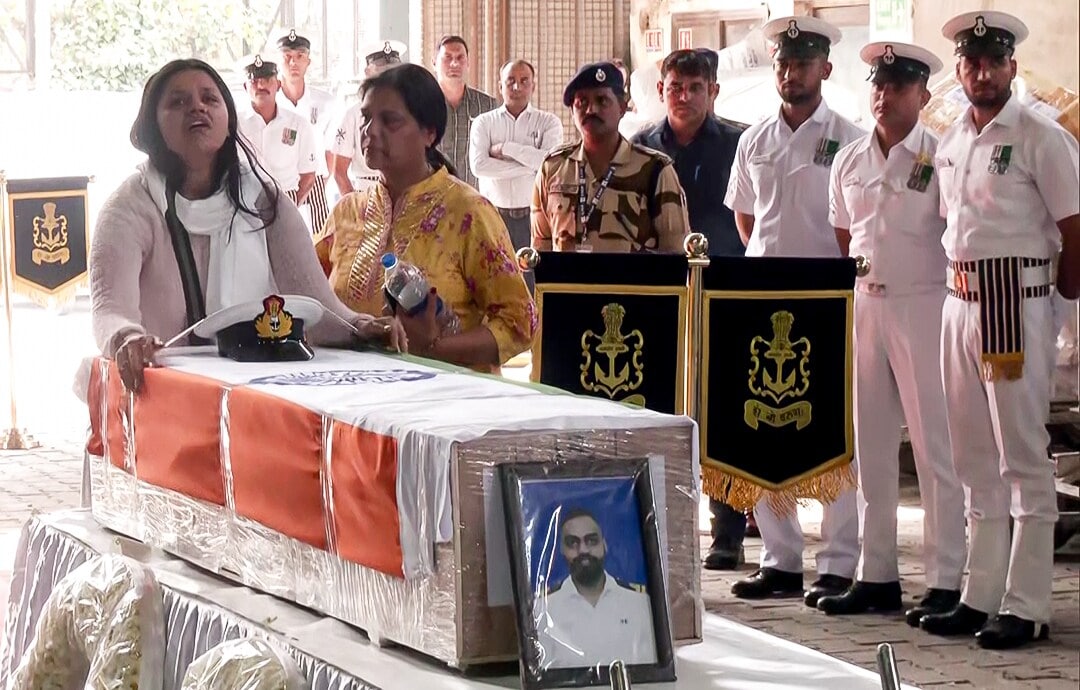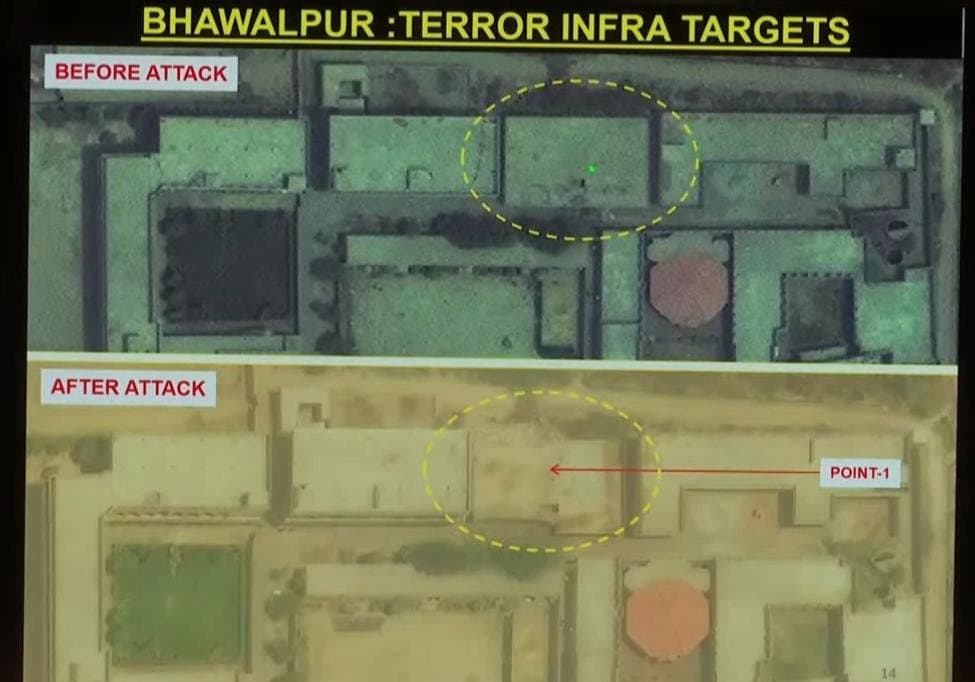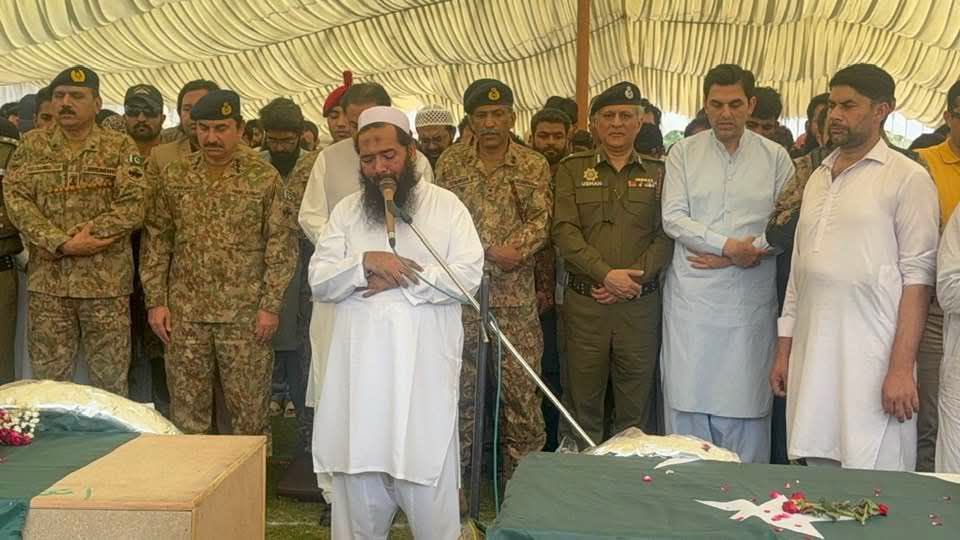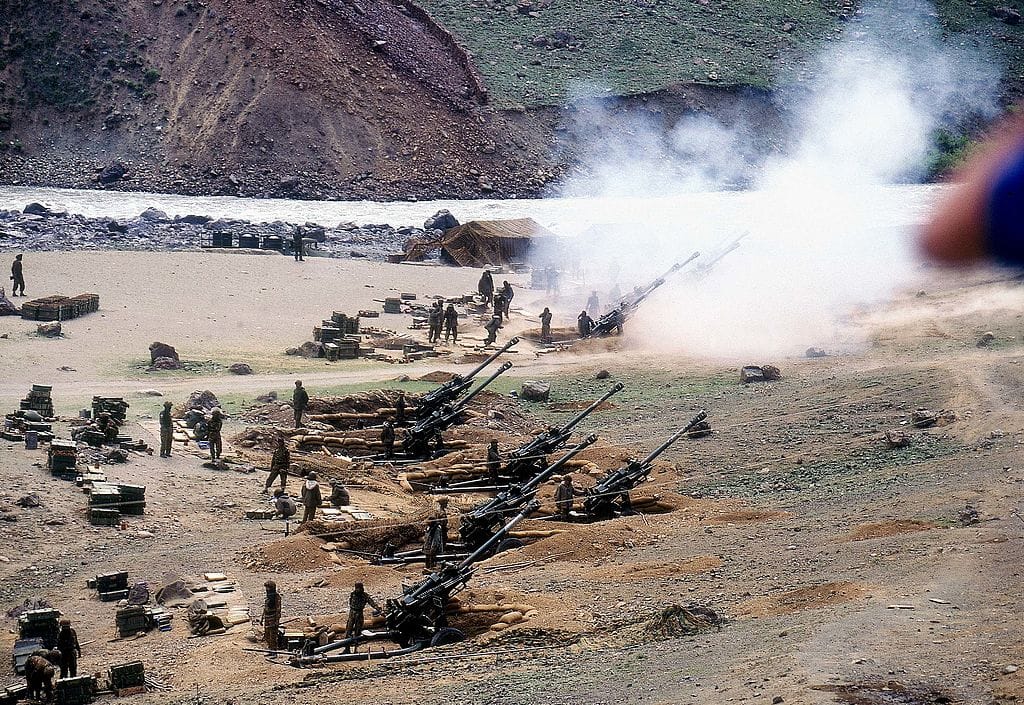Operation Sindoor: Candlelight vigils to BrahMos precision - S Gurumurthy's take on India's rewritten anti-terror playbook

In a scathing and emotionally charged column published in , S Gurumurthy — editor of Thuglak Tamil Magazine and chairman of the Vivekananda International Foundation — lays out a comprehensive and unapologetically nationalistic take on Operation Sindoor, India’s successful military retaliation to the brutal April 22 Pahalgam terror attack. His column contextualizes the operation not just as a military strike but as a symbol of national resurgence, painting it as a turning point in India's war on terrorism emanating from Pakistan.
Gurumurthy anchors the emotional thrust of his narrative in the grief of Himanshi Narwal, whose husband was killed at point-blank range by Islamic terrorists during the Pahalgam attack.
“The horrible picture of Himanshi Narwal, married just a week back, sitting alone by the side of the dead body of her husband with his head smashed by a point-blank gunshot of Islamic terrorists at Pahalgam on April 22, went viral on the national and global media,” he wrote.
He views the viral image of Himanshi as a defining symbol of the operation and a rallying cry for national outrage.
“That unforgettable scene and the unforgivable crime became the theme and symbol for Operation Sindoor, the code for Indian military action against the Islamic terror camps in Pakistan. Ironically, it is an anti-India, anti-Hindu New York Times [May 7] that saw Himanshi as the Indian feminine cultural symbol of Operation Sindoor,” he added.
Linking the symbolism of sindoor — a sacred marker of marital status in Hindu tradition — to the violence that widowed Himanshi and others, Gurumurthy traces how a personal loss morphed into a national mission.
“Nine days later, in a blood donation camp on her slain husband’s birthday, Himanshi demanded the perpetrators of the Pahalgam carnage be brought to book. That was how the sindoor that the Pahalgam terrorists wiped out from her and 25 other women’s foreheads became the spilled sindoor sign in the Op Sindoor code, and the emotive symbol of the national mission to avenge the dastardly crime against Indian women. Indian defence forces executed the mission with such precision and perfection that even the Israelis famous for such actions would learn and benefit from our intelligence and military professionals,” he stated.
Gurumurthy doesn’t mince words in reiterating his long-held belief that Pakistan functions as a terror state.
“Op Sindoor, which will figure in military history as the most spectacular anti-terror operation anywhere in the world, daring a nuclear power which threatens to press its nuclear button at will, cannot be rivalled even by Israel, the master terror-buster. The reason is simple. Israel faces no nuclear threat. Op Sindoor is also the high vantage point of rising India’s war on the terror state of Pakistan, from where the Modi India binned and buried the most dangerous and anti-Indian, anti-human narrative of the Sonia-Manmohan-led India that ‘Pakistan is not a purveyor of terror but a victim of it’,” he opined.
“The shameful endorsement of the terror state of Pakistan as a victim of terror needs to be recalled and its authors shamed, as Op Sindoor finally proved it is a terror state. For, Pakistani generals stood in reverence and paid homage to the most wanted terrorists killed in the operation. In 2011, Pakistan stood naked before the world as a global terror merchant, as the US commandos chasing the 9/11 Osama Bin Laden who massacred over 4,000 men and women, found him in Abbottabad in Pakistan well protected by the Pakistan military,” he added.
“And yet, India under the Congress-led coalition government was busy probing and proving Hindu terror! Until Modi arrived on the scene in 2014 and began to unravel that Pakistan itself is a terrorist state, two generations of Indians were fed on the narrative that friendship with Pakistan was the best way for both to fight terror when it really meant shaking hands with the terrorist! Pakistan is not run by government or law. It is driven by a huge terror architecture,” he further stated.

Gurumurthy also explains in detail how Pakistan’s military, intelligence, and religious institutions operate as a seamless terror apparatus.
“Before Op Sindoor is unravelled, the story of how Pakistan’s terror infrastructure is structured from the times of Gen Zia-ul-Haq, when the country adopted jihad as a state policy, needs to be told. The Pakistani state, army and intelligence converged to create and sustain a massive global-level terror infra—first backed by the West against Russia in the 1980s, and later for covert war against India. Every nation has an army, but Pakistan’s army has a nation, which is Pakistan, is a famous quip in diplomatic circles,” he noted.
“The Pakistan army, which is seen as an icon by its people, dominates not just the national polity; it controls its economy and stock market. The Soldiers Foundation, managed and owned by the Pakistan army, is a huge conglomerate of fertiliser, cement, food, retail, power generation, gas exploration, LPG marketing distribution and financial services companies. It also provides womb-to-tomb benefits to retired Pakistani armymen and their families (Balfour, Frederik. “Pakistan: Armed Forces Inc”. Bloomberg 11 Nov 2001),” Gurumurthy added.
Citing economic data to claim how Pakistan’s army is effectively a business empire, he stated, “The share of Soldiers Foundation in Pakistan’s stock market capitalisation is, believe it, a shocking 70%! (Pakistan: Army with a Country [2011] by Prof R Vaidyanathan, IIM Bangalore). Pakistan’s current stock market capitalisation is $43 billion. It means Pakistan’s army has $30 billion in liquid funds. It is with this huge fund that the Pakistan army — which could not win any of the four wars with India — and its Inter Services Intelligence built thousands of madrasas to nurse millions of radicalised youth. From this huge radical catchment area, the government, army and intelligence set up Jaish-e-Mohammed (JeM) Lashkar-e-Toiba (LeT) and Hizbul Mujahideen (HM). The Resistance Front (TRF) and tens of other jihadi outfits were also created to recruit jobless youth to wage a covert war on India with the support of the army and 'bleed India with a thousand cuts'.”
According to Gurumurthy, this financial muscle has funded the creation and sustenance of major jihadist outfits.
“The terror outfits function in Pakistan in the mansions protected by the army, from where the jihadis enter India with army cover, kill and escape with impunity. Even though the state which protects them is a fraudulent legal sovereign, the victim of terror, India cannot hit the terror outfits without violating the alleged sovereignty of Pakistan, which is undoubtedly a jihadi state,” he remarked.

Critiquing India's response to terror from 1990s to early 2010s, Gurumurthy blames coalition politics and a pacifist narrative for emboldening Pakistan.
“Since the 1990s, India has been suffering silently or crying loudly about the terror attacks by jihadi outfits operating from inside Pakistan killing tens of thousands of people. With the Indian state ruled by rickety and weak coalitions from 1989 to 2014, Pakistani terrorists not only operated freely, Pakistan even had the sympathy of the Indian state. When in 2008, Islamist terrorists, including Ajmal Kasab, sent by Pakistan slaughtered and maimed hundreds of innocents in Mumbai — which was witnessed by the whole world on television — the Sonia-Manmohan-run Indian state fervently appealed for peace and harmony, sponsored and led candlelight processions, even empathised that poor Pakistan was also a victim of terror, certifying the greatest terror merchant against India as innocent. They even kept saying that terror has no religion, it is secular! But they turned to say there was in fact Hindu terror, with Rahul Gandhi warning the US that Hindu terror was more dangerous! This was the narrative about terror in India when Narendra Modi led the BJP to win a majority on its own in 2014,” he elaborated.
In his column, S Gurumurthy recounts how Prime Minister Narendra Modi’s early outreach to Pakistan, reminiscent of Vajpayee’s peace efforts, was swiftly betrayed by terror strikes—shaping his hardened stance against Islamabad.
“With his image dented all over the world as Hindu nationalist and anti-Muslim, and many countries denying him visas, Modi had to overcome the negative image particularly in the context of Pakistan. He chose to attend Nawaz Sharif’s family wedding on December 25, 2015, the way Atal Bihari Vajpayee travelled by bus in Feb 1999 to Lahore — to befriend Pakistan. Within three months of Vajpayee’s bus travel, in May 1999, Pakistan launched the Kargil war to stab him in the back. And within seven days of Modi attending Sharif’s family wedding, on January 2, 2016, JeM struck at the Pathankot military base, killing seven army personnel and injuring 25 others. Modi realised that in Pakistan neither the prime minister mattered nor the government; what mattered were the terror outfits as the extended arm of the army and ISI,” he noted.

Gurumurthy credits Prime Minister Narendra Modi with transforming India’s posture from passive to offensive.
“When the JeM terror struck Uri and killed 19 Indian soldiers in September 2016, Modi ordered a surgical strike by the army, which crossed the Line of Control (LoC), entered Pakistan-occupied Kashmir (PoK) and killed some 70 terrorists. Modi reversed the Indian response to terror from candle lights to gun shots. In 2019, he improved it further. When JeM struck at Pulwama on February 14 and killed 46 CRPF jawans, Modi ordered the Indian Air Force to cross the LoC and hit the JeM camp at Balakot, which killed as many as 250-300 jihadis. Modi upgraded the Indian response from gun fight in 2016 to aerial bombing in 2019. Pakistan called its nuke command group meeting to threaten India in 2019. Modi brushed it aside. India firmly declared the grammar of its anti-terror action to cross-border attack. Save wailing and complaining, Pakistan could do nothing,” he higlighted.
S Gurumurthy also elaborates on how the abrogation of Article 370, followed by decisive military and policing actions, led to a dramatic decline in terrorism and a political turnaround in Kashmir, even bringing former critics into the fold of the new normal.
“As 2019 ended, Article 370 was thrown into the dustbin. Again Pakistan could only lament and shout. With the surgical strikes and airstrikes that hit the terror launchpads, coupled with greater policing clamping down on terror, Kashmir became peaceful, prosperous. From 86 terror killings in Kashmir in 2018, the count came down to 12 in 2023. Elections were held in 2024. The Abdullahs who opposed the repeal of Article 370 became rulers in Kashmir sans Article 370,” he said.
In the column, Gurumurthy also paints a chilling picture of the Pahalgam massacre as the tipping point that compelled Prime Minister Modi to abandon covert retaliation and openly declare a bold, high-stakes military mission—executed with BrahMos missiles—that directly targeted terror camps embedded within the Pakistani state apparatus.
“A humiliated Pakistan lost all its senses and struck through LeT’s proxy TRF at the unguarded tourist spot in Pahalgam. Worse, it killed tourists after checking their religion and confirming that as mandated by Islamic theology, which governs Pakistan, they killed only Kafirs, that is Hindus. Their theology did not say they should do it in front of the victims’ wives and children. But they did that too. Modi vowed India will chase the beastly terrorists, their backers and funders to the ends of the earth and bury them in the soil – an open political direction to the Indian defence, intelligence and diplomatic community. It needed no political pundit to deduce that the PM’s direction was to hit terrorist camps in Pakistan. The heart-rending terror left no option to the political system and the leadership but to declare an open war against terror. But this was unlike the US-led war on terror directed against a state – the invasion of Afghanistan. Our war on terror was not to be and could not be an open war against the state of Pakistan. But technically any attack on the terror camps in Pakistan, which are an extension of the state and the army, was an attack on the state of Pakistan itself. Modi knew that attacking the terror bases in Pakistan would invite a war with the mad Pakistan with nukes in its hands. Yet he decided to initiate that war by his open direction to hit the terror bases, which was like declaring a war and notifying Pakistan ‘we are going to hit you’," he wrote.
Highlighting the unprecedented nature of Operation Sindoor, he further stated, “To execute an openly declared mission, which deprived the Indian army of the surprise element needed for the attack to succeed, was indeed a daunting challenge, as the enemy would be fully prepared to thwart it. Also since it was an openly declared cross-border attack, besides military preparation, it called for extremely skilful diplomatic manoeuvre to gain the support of the major powers of the world for the operation and to minimise opposition.”
“Within 15 days of the Pahalgam slaughter, Team Modi comprising the tri-forces, intelligence and diplomacy spectacularly accomplished the explicitly declared mission by hitting nine terror bases in Pakistan and killed over 100 jihadis. This time, it was no gun shot as in PoK. No aerial bombing as in Balakot. Modi upgraded his response to the barbaric Pakistan terror to another level — to BrahMos missiles,” he added.

S Gurumurthy reflects on the strategic evolution of India’s anti-terror doctrine under Modi, noting how lessons from Balakot in 2019 laid the groundwork for a bold, openly declared non-contact warfare model in 2025—executed with such precision that it surpassed even Israel’s famed counter-terror operations.
“How could Modi transform the anti-terror mission, kept secret to launch surprise attacks on terror camps in PoK in 2016 and in Balakot in 2019, into an open and notified mission in 2025 and succeed in it? His preparations for 2025 started after Balakot in 2019 when he realised that an altogether new non-contact war model was needed to target not just terror but its sponsor, Pakistan. The next part is about how the Indian army, air force and navy masterfully and professionally executed that openly declared mission against terror and how they excelled even Israel in an Israel-model attack,” he wrote in conclusion.